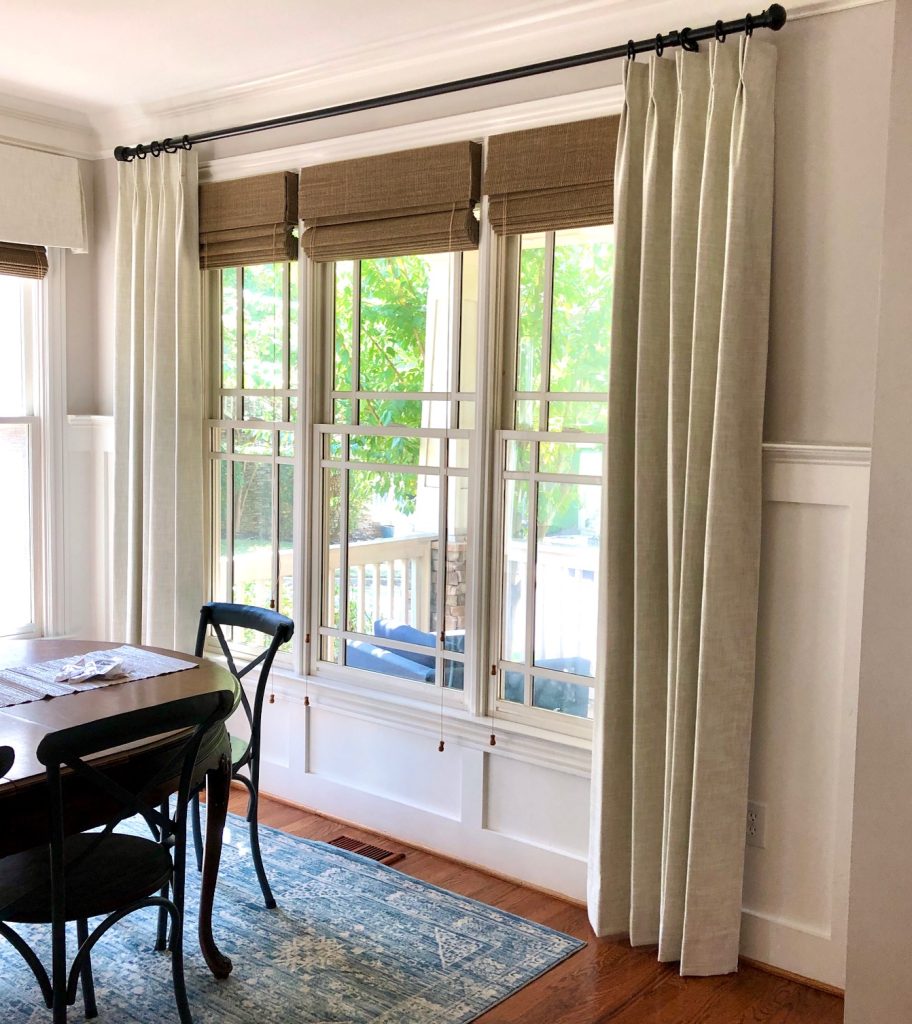Most rooms are not complete without window treatments! Fabric window treatments add softness, another layer to your design, and can add color, pattern, and/ or texture. In short, window treatments are a great finishing touch for any space.
The first step when deciding on window treatments is to decide if you need functional window treatments, want something decorative, or both.
Let’s look at the two categories of window treatments:
1. FUNCTIONAL WINDOW TREATMENTS – these are treatments that you can open and close for either privacy or light control. Examples are blinds, shades, shutters, and functional vs stationary) drapery panels.
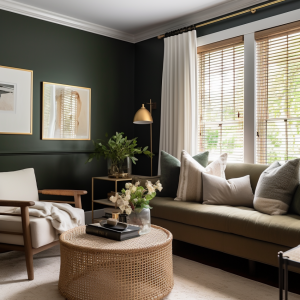
BLINDS are a good choice when you want to tilt and control some light and privacy, but don’t need to be raising and lowering them all the time. They can be raised but are heavy and cover a lot of the window at the top when they are raised, so usually they are just left down and the vanes are open, semi closed, or closed. They are available in wood or faux wood, painted or stained.
SHUTTERS can be done for arched windows or standard windows, painted or stained. If ordered with a divider bar in the center, you can control the top of the shutter separate from the bottom. This allows for privacy on the bottom while keeping the top open for light.
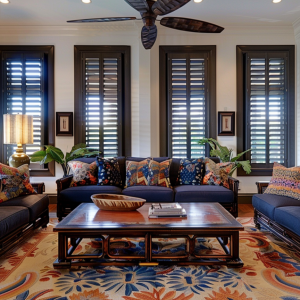
WOVEN SHADES – can be ordered lined or unlined, with cords or cordless (make sure you can reach when shade is up to pull it down) A top down option can also allow you to lower the shade from the top or raise from the bottom They are available in many fabrics and are a good option when you also want to add texture.
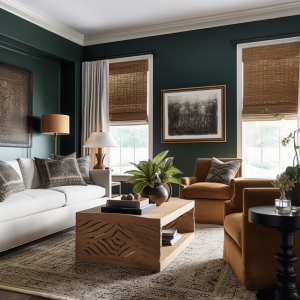
ROMAN SHADES give you thousands of fabrics to choose from. You can use one fabric in a solid or print, or band them with a contrast fabric or trim. To operate them, you have the option of cords, chain, or cordless.
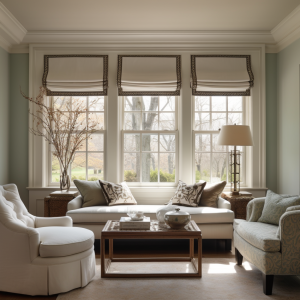
2. STATIONARY WINDOW TREATMENTS – these are treatments that do not open and close. Their purpose is more decorative, to add softness, color, texture and complete the design. When mounted above window frame close to moulding or ceiling line,they also add visual height to the room. They can be used with functional window treatments – for example, shades with stationary panels.
VALANCES can be made in thousands of fabrics – solids, prints, or a combination of both. They can be either mounted on a wood board covered by the fabric or on a pole. They can be used alone or paired with panels, blinds or shades.
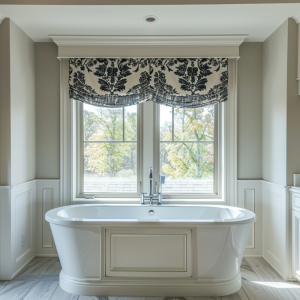
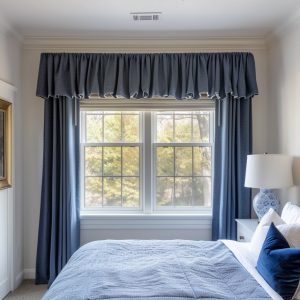
CORNICES offer a very tailored look. A frame with wood on the front and sides is constructed out of wood and then covered with fabric. They can have constrast fabric bancs, buttons, curved or straight shapes and more.
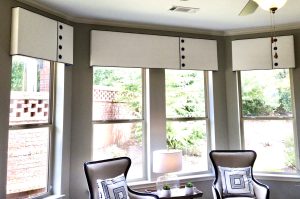
Tip: Valance or cornice vertical length should be in proportion to the window and ceiling height so they don’t look too skimpy or too top heavy. Typically I calculate the valance height to be 1/5 of the total length – from the top of the valance to the floor. For example, if you are mounting the top of the valance at 96” from the floor, 96/5= 19” for the length of the valance.
PANELS, also known as drapery panels or curtain panels. These are currently the most popular stationary window treatments. We can do many variations, from a solid fabric, to contrast bands and trimmings.
They complement blinds and shades very well, where the shade provides privacy and the panels add the height and finishing touch.
These two story panels are the wow in this living room. They emphasize the height of the room and contrast color bands add a custom touch. Because there wasn’t much wall space between the window frames and the fireplace, we did outside panels that only covered the outside window frame and allowed for a lot of light and wooded view.
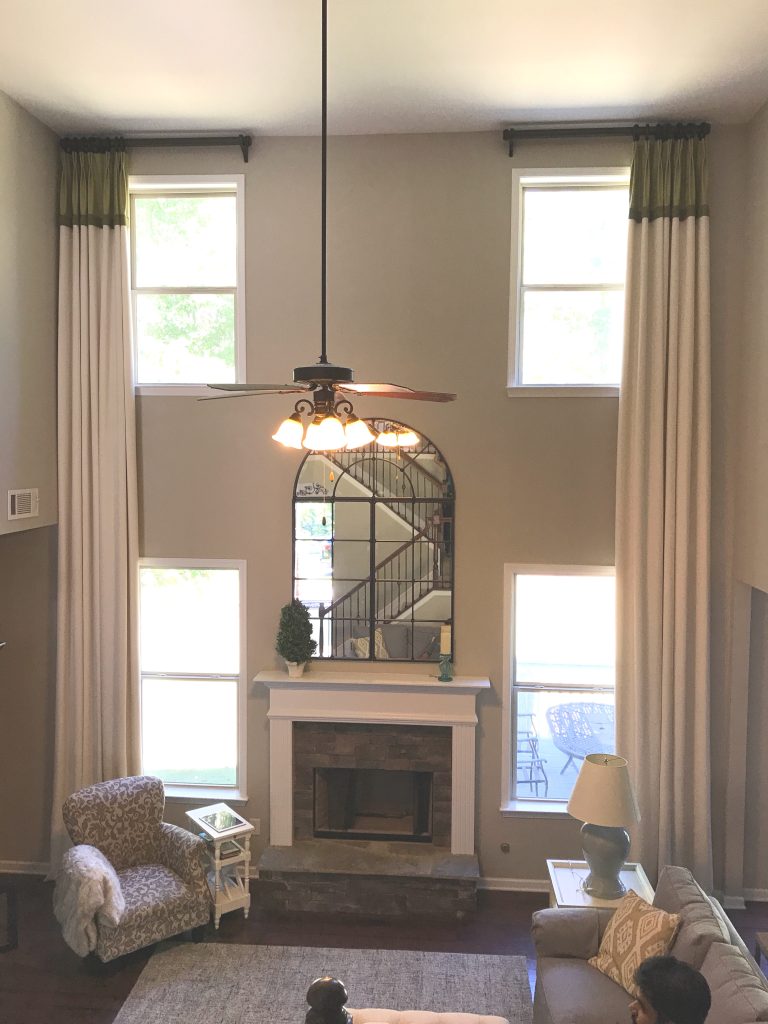
There are a lot of variations for custom panels. We made these to follow the slope of the ceiling so we could mount high and give the room the visual height of the window. A lot more dramatic than mounting under the arch!
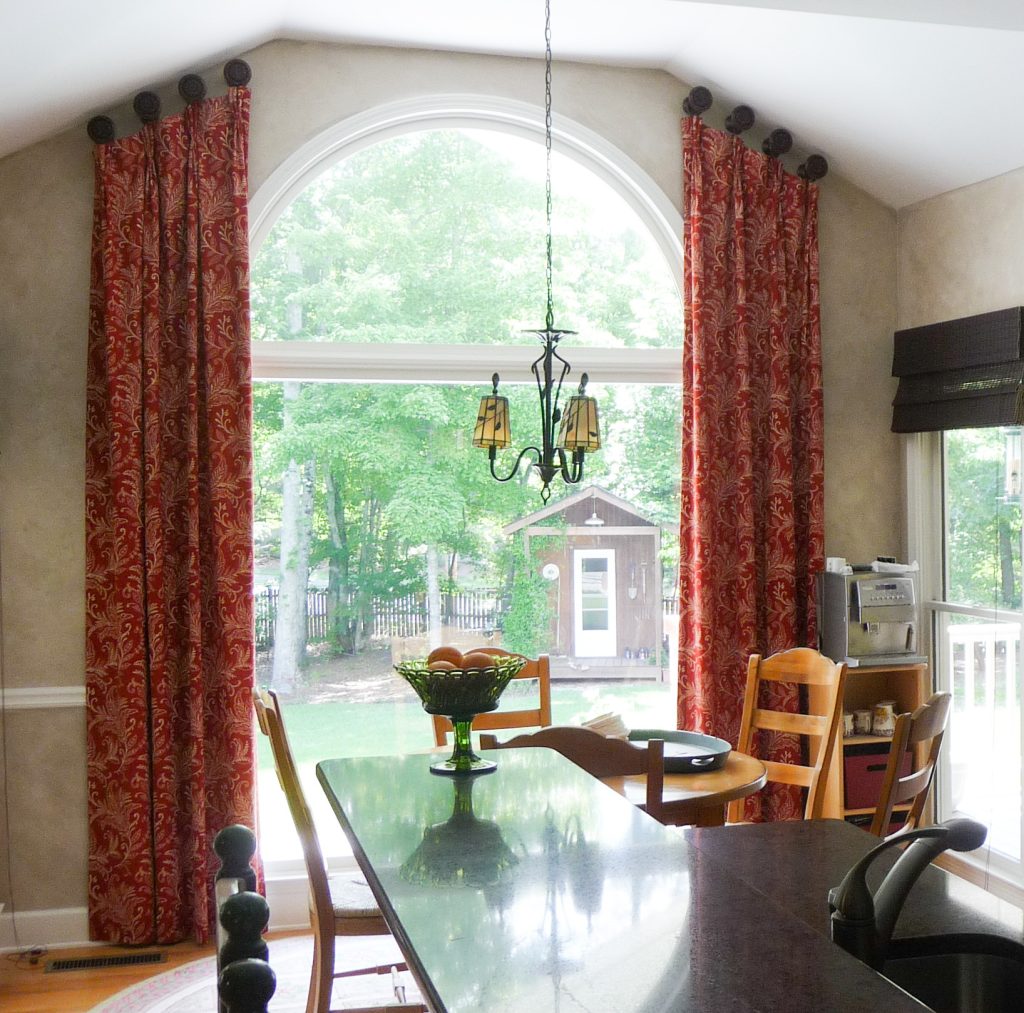
DESIGNER TIPS:
-Mount high when you can. This gives the room visual height.
-Mount wide when you can, only covering window frame if you have the wall space. This not only allows for more light but also makes window wall look wider.
-Unless they are meant to be sheer, all custom window treatments should be lined. There is a variety of linings available. I often choose a soft hand blackout lining, even for stationary panels, so they look even on the front instead of light coming thru in some places but not others.
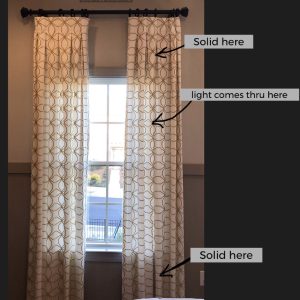
-Decorative Hardware: Panels and some valances will require decorative hardware. You can choose from wood (and resin), metal, or iron. There are many choices so choose a style and finish that complements the room’s style and decor. Metal poles with finials (decorative piece at the end of the pole) and rings are very popular. When using a metal pole, choose one that is at least 1″ in diameter so it doesn’t look skimpy and can hold the weight without bending. Solid (without a seam) vs telescoping poles look more custom.
– Determine how much space you have between window frame and end of wall before selecting finials. Some may be too long and in some cases you may need to choose one that has end cap options vs finials.
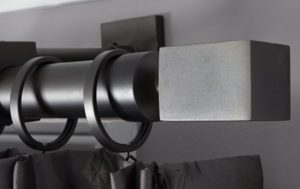
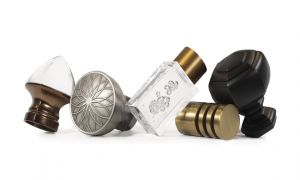 Custom poles can also be ordered to follow a curve on the wall…and if you are not a fan of finials, choose a french return pole that will curve into the wall with no need for finials.
Custom poles can also be ordered to follow a curve on the wall…and if you are not a fan of finials, choose a french return pole that will curve into the wall with no need for finials.
There is no doubt, custom window treatments are one of the most important finishing touches for any space. They complete the room and certainly take your home to the next level!
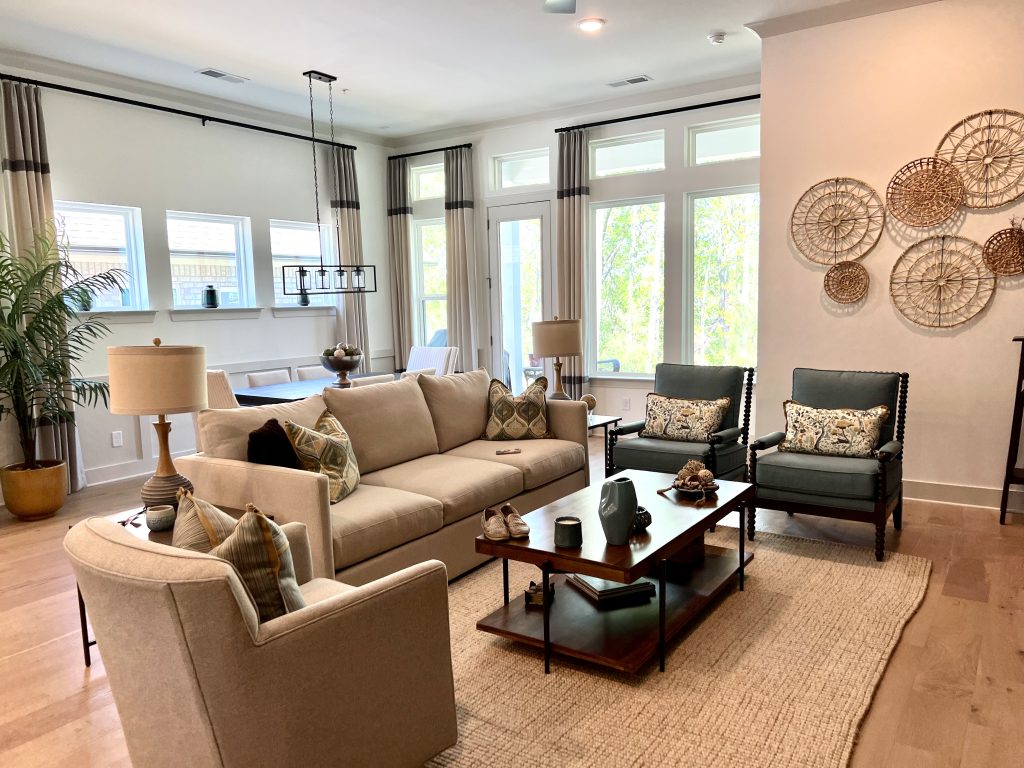
Want help designing the perfect window treatments for you and your home?
Schedule your in-person or virtual consultation today!
e@nextlevelinteriors.com 678-935-NEXT (6398)

